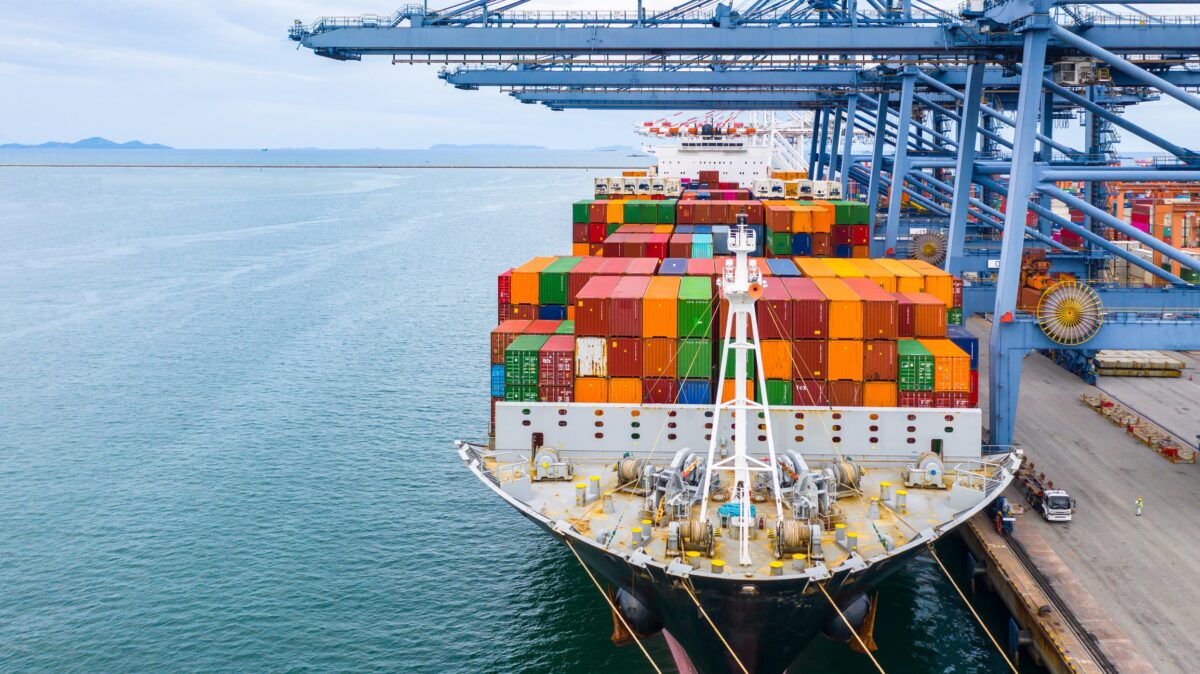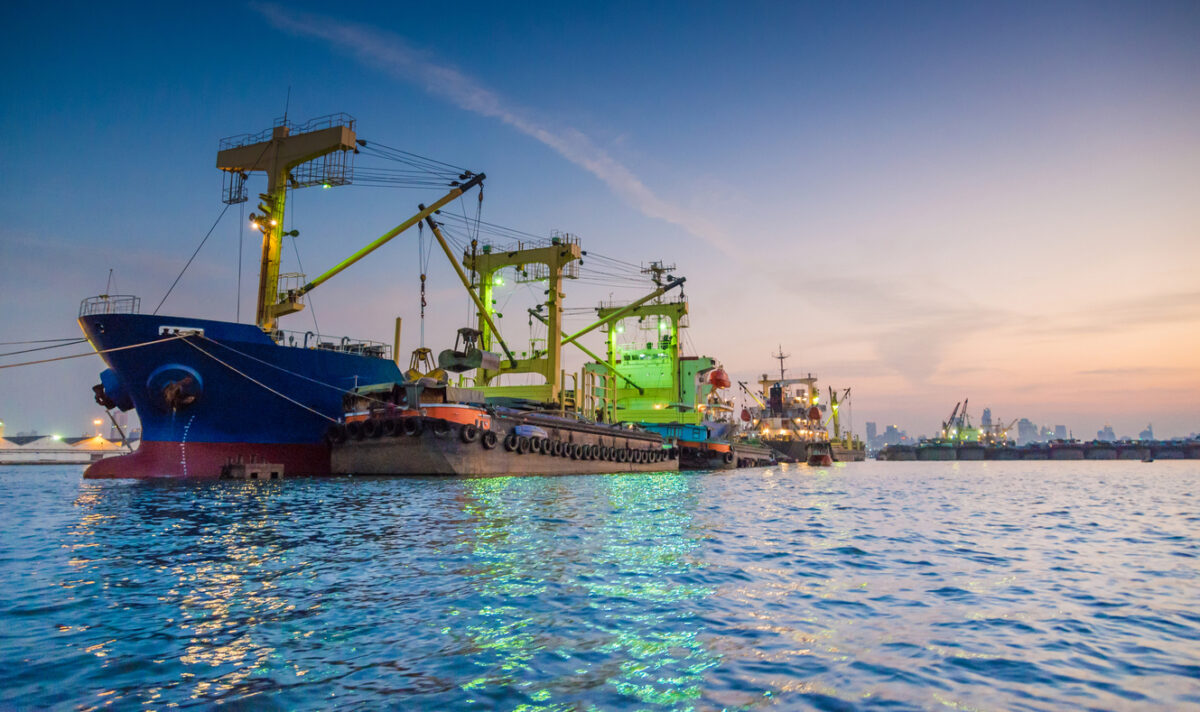Effective today — October 14, 2025 — the U.S. Trade Representative’s Section 301 vessel fees take effect for container shipping. These fees are assessed to the vessel operator (not directly to shippers) and are due at/before entry at the first U.S. port on a given rotation (with a cap of five charges per vessel per year).
Quick status for shippers: As of publication, carriers have indicated no immediate pass-through surcharges tied to the USTR vessel fees; operators are absorbing the cost for now. We’re monitoring carrier advisories continuously.
What's Covered
Rate (Today): $50 per net ton (NT). Further increases are scheduled for 2026–2028.
Assessment: Charged once at the first U.S. port per rotation/string; max 5 charges per vessel/year.
Rate (Today): Higher of $18/NT or $120 per container discharged, with scheduled increases in 2026–2028.
Assessment: Charged once at the first U.S. port per rotation/string; max 5 charges per vessel/year.
Market Implications and Fleet Adjustments
Recent data from Drewry Maritime Research and the U.S. Trade Representative shed light on how the Section 301 fee structure is already shaping carrier and shipbuilding trends. The decision logic behind the new fees has prompted carriers to reassess their vessel deployment strategies—particularly those involving Chinese-built ships.
Since mid-2025, Drewry’s data shows a gradual but measurable decline in the use of Chinese-built vessels on major Asia–North America routes, as carriers shift to alternative tonnage to limit fee exposure. At the same time, China remains overwhelmingly dominant in global shipbuilding, responsible for nearly all new containership production worldwide.
This combination—rising regulatory pressure and limited diversification in shipbuilding capacity—highlights the delicate balance carriers must navigate. Efforts to avoid U.S. or Chinese port fees may reduce immediate cost exposure, but they also risk constraining vessel availability and tightening global freight markets through 2026.
What This Means for Your Freight Bill Today
- No new line item expected today. Based on current carrier guidance, expect no new “Section 301 Surcharge” today.
- Contract housekeeping: Even with no surcharge today, confirm how a future pass-through would be reflected (line item vs. base-rate change) and whether escalation years (2026–2028) are addressed.
- Service planning: Ask providers whether your loops are exposed to Annex I or Annex II to understand where upstream operator costs exist.
Looking Ahead to 2026: Why Pass-Throughs Could Emerge
While carriers are absorbing costs now, it’s unlikely to remain that way into 2026 if the rate environment strengthens:
- Network realignment = artificial tightness: Pulled strings and vessel swaps (often smaller ships) are creating rolls/double-rolls in select corridors despite softer demand headlines.
- Capacity downshift: Average vessel size and offered capacity on TPEB are down vs. mid-year, tightening certain weeks.
- Carriers have the lever: If spot lifts (e.g., pre–Lunar New Year strength carries into spring), carriers can pull capacity and are more likely to push for pass-through of USTR costs.
- Pricing math matters: A surcharge of a few hundred dollars per FEU is hard to sustain when spot is too low relative to competitors—but becomes viable if spot strengthens and network disruptions persist.
Market Watch: China’s Retaliatory Port Fees (Effective Today)
China has now confirmed plans to impose reciprocal port fees beginning October 14—the same date U.S. fees take effect. According to Lloyd’s List and Journal of Commerce, these Chinese port levies will apply to any vessel owned or operated by an entity with 25% or more U.S. ownership, whether direct or indirect.
While the U.S. fees primarily target Chinese-operated and Chinese-built vessels, China’s reciprocal policy casts a much wider net, with implications extending beyond container carriers into tanker and dry bulk markets. Analysts warn the measure could significantly disrupt global chartering and trade flows.
Key points from early analysis include:
- The 25% ownership rule could include vessels tied to any company with U.S. investors, funds, or board representation—even if the ship itself is not U.S.-flagged or built.
- Major U.S.-listed carriers such as Matson and ZIM Integrated Shipping could face fees at both ends—U.S. and Chinese ports—putting them at a cost disadvantage versus non-U.S.-listed operators.
- The Chinese fees are expected to have a greater impact on bulk and tanker trades than on containerized freight due to higher per-call costs and limited exemptions.
- Initial modeling suggests added voyage costs of $5–6 million per tanker call and potential rate spikes as charterers avoid ships that might trigger the new fees.
Industry experts caution that China’s definition of “U.S. ownership” remains ambiguous, and enforcement could hinge on how Chinese regulators interpret indirect holdings through U.S. funds such as BlackRock, Fidelity, or Vanguard. This uncertainty has already begun to influence chartering behavior, with some cargoes reportedly diverted to India and Indonesia to avoid Chinese discharge.
While the measure will likely increase near-term freight rates, it also introduces long-term inefficiencies across global trades.
Turn Uncertainty Into Action with Bluspark
At Bluspark, we continue to track every regulatory update—from CBP CSMS #66427144 to USTR FAQs—to help our clients anticipate cost exposure and maintain compliance. Our consulting team combines trade policy expertise with hands-on operational insight to help companies anticipate and respond to evolving global regulations. We analyze carrier and vessel exposure to Annex I and II risk, model the potential cost impact of tariffs and fees across your shipping lanes, and identify cost-saving alternatives through strategic procurement and route optimization.
As new tariffs, export controls, and Section 301 requirements continue to reshape the trade landscape, Bluspark serves as your partner in maintaining a stable, compliant, and cost-effective supply chain.
If you need assistance mapping which of your ocean services fall under Annex I or II, or building mitigation scenarios, contact Bluspark’s consulting team to schedule a short readiness review.

